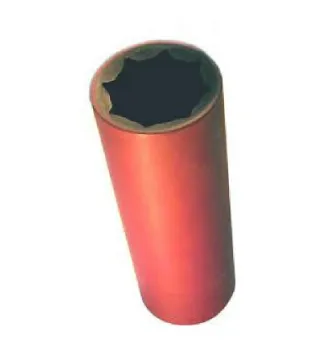Understanding Marine Bearings
When it comes to marine vessels and trailers, bearings play a critical role in ensuring durability, performance, and safety. From marine bearings used in propulsion systems to boat trailer wheel bearings that keep your trailer running smoothly on land, each type serves a unique and vital function. This article will explore three key types: marine bearings, cutlass/cutless bearings, and boat trailer wheel bearings, providing a comprehensive overview of how they support the marine industry.

What Are Marine Bearings and Why Are They Important?
Marine bearings are specialized components designed to support shafts and reduce friction between moving parts in marine environments. These bearings must endure harsh conditions such as saltwater, pressure variations, and constant motion. They are often found in the propulsion systems of boats and ships, especially in areas such as stern tubes, rudders, and engines.
There are several types of marine bearings, including:
Sleeve bearings: Typically used in propeller shafts, they help reduce vibration and maintain shaft alignment.
Thrust bearings: Support axial loads generated by the propeller.
Water-lubricated bearings: These bearings use water as a lubricant instead of oil or grease, making them environmentally friendly and low-maintenance.
One of the most widely used types of water-lubricated marine bearings is the cutlass bearing—sometimes spelled as cutless bearing. Despite the different spellings, both terms refer to the same essential component.
Cutlass Bearings vs. Cutless Bearings: What's the Difference?
The truth is, there is no technical difference between a cutlass bearing and a cutless bearing—they are simply alternative spellings of the same item. This type of bearing is crucial for boats that use water-lubricated shaft systems.
A cutlass bearing boat system includes a cylindrical tube lined with a durable rubber material, often with longitudinal grooves that allow water to pass through and cool the shaft. These bearings are typically housed in the strut or stern tube and are essential for:
Supporting the propeller shaft
Minimizing shaft wear and vibration
Allowing water to act as both a lubricant and coolant
Key features of cutlass bearings include:
Corrosion resistance: Essential for long-term performance in saltwater.
Ease of replacement: Most are press-fit and can be changed during routine maintenance.
Silent operation: The rubber lining absorbs vibration and noise, improving the onboard experience.
When searching for replacement parts, many boaters use both cutlass bearing and cutless bearing as keywords, but it's important to ensure compatibility with your vessel's specifications.
Boat Trailer Wheel Bearings: Crucial for Transport Safety
While marine bearings keep your vessel running smoothly on water, boat trailer wheel bearings are responsible for safe and efficient transport on land. These bearings allow the wheels of your trailer to spin freely and support the weight of the boat during towing.
Failure of boat trailer wheel bearings can lead to dangerous situations like seized wheels, loss of control, or even wheel detachment. Therefore, regular inspection and maintenance are essential.
Common signs of worn boat trailer wheel bearings include:
Unusual noises (grinding or squealing)
Excessive wheel play
Overheating hubs after towing
Maintenance tips:
Grease regularly: Use marine-grade grease to prevent corrosion and ensure smooth operation.
Use bearing protectors: These help keep out dirt and water.
Inspect before every trip: Especially if you’ve recently submerged the trailer in water.
Whether you're towing across town or making a long haul to your favorite marina, healthy boat trailer wheel bearings are non-negotiable for safety.
From smooth propeller rotation in the water to stable trailer wheels on the road, marine bearings, cutlass bearings, and boat trailer wheel bearings all play a crucial role in the boating ecosystem. Understanding the differences—and proper maintenance requirements—can prevent costly damage and extend the life of your equipment.
Whether you're researching cutlass bearing boat installations, replacing worn cutless bearings, or simply maintaining your boat trailer wheel bearings, investing in quality parts and upkeep will ensure your vessel is always ready to sail or tow.
-
Seal 12x20x5: Precision Radial Shaft Seals for Industrial Reliability
Новости Nov.24,2025
-
Seal 12x18x5: Essential Guide to Specifications, Applications & Vendors
Новости Nov.24,2025
-
Understanding Seal 12 20 5: Applications, Specifications & Industry Insights
Новости Nov.23,2025
-
Durable Oil Seal 85x110x12 – Reliable Sealing Solutions for Industry
Новости Nov.23,2025
-
Durable and Precise Oil Seal 75x95x10 for Efficient Machinery | YJM Seal
Новости Nov.22,2025
-
Durable Oil Seal 75x100x10 for Reliable Industrial Performance | YJM Seal
Новости Nov.22,2025
-
High-Quality Oil Seal 65x90x10 | Durable & Reliable Sealing Solutions
Новости Nov.22,2025
Категории товаров















